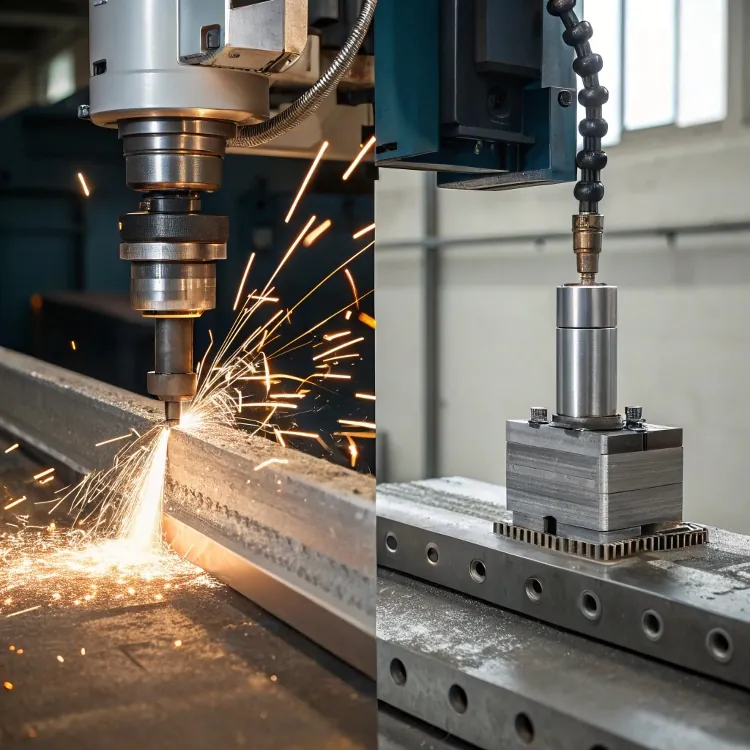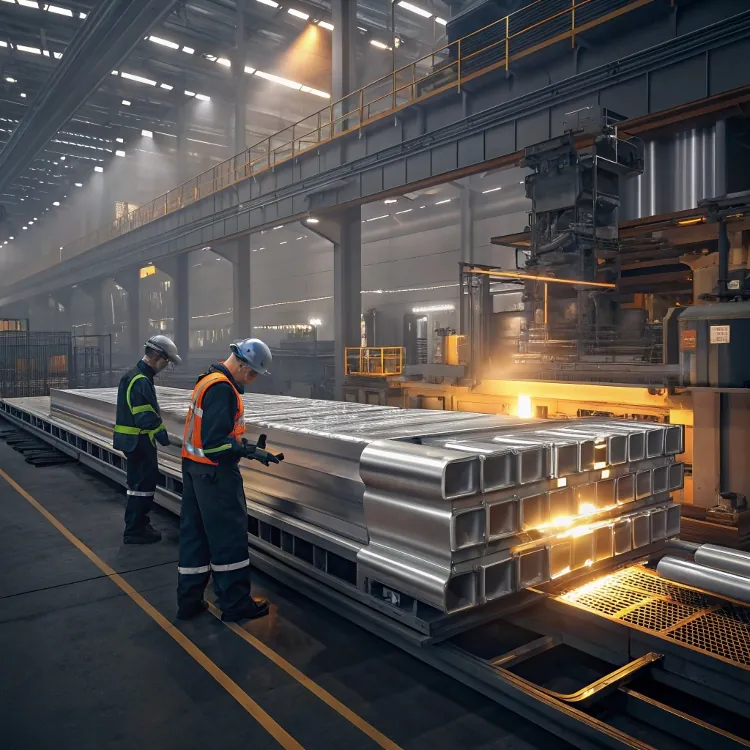Aluminum Extrusions Alloy 6061 vs 6082: Which One Should You Choose?

Choosing between 6061 and 6082 aluminum alloys can be challenging, especially when considering factors like strength, weldability, and application suitability.
6061 aluminum is renowned for its excellent machinability and weldability, making it ideal for general-purpose applications, while 6082 offers higher strength, suitable for structural components requiring superior load-bearing capacity.
Understanding the differences between these two alloys is crucial for selecting the right material for your specific needs.
How do 6061 and 6082 aluminum alloys differ?
Both 6061 and 6082 belong to the 6000 series of aluminum alloys, known for their magnesium and silicon content, which provides good strength and corrosion resistance.
The primary difference lies in their mechanical properties and applications: 6061 is more versatile and easier to machine, whereas 6082 offers higher strength, making it preferable for structural applications.

Chemical Composition Comparison
| Element | 6061 (%) | 6082 (%) |
|---|---|---|
| Magnesium (Mg) | 0.8–1.2 | 0.6–1.2 |
| Silicon (Si) | 0.4–0.8 | 0.7–1.3 |
| Manganese (Mn) | 0.0–0.15 | 0.4–1.0 |
| Chromium (Cr) | 0.04–0.35 | 0.0–0.25 |
| Zinc (Zn) | 0.0–0.25 | 0.0–0.2 |
The higher manganese content in 6082 contributes to its increased strength compared to 6061.
6082 aluminum has a higher manganese content than 6061 aluminum.True
The increased manganese in 6082 enhances its strength over 6061.
6061 aluminum contains more manganese than 6082 aluminum.False
6061 has lower manganese content, resulting in slightly lower strength.
Which alloy is better for structural applications?
When it comes to structural applications, strength and load-bearing capacity are paramount.
6082 aluminum is generally better suited for structural applications due to its higher tensile and yield strength compared to 6061.

Mechanical Properties Comparison
| Property | 60611-T6 | 6082-T6 |
|---|---|---|
| Ultimate Tensile Strength (MPa) | 290 | 330 |
| Yield Strength (MPa) | 240 | 280 |
| Elongation (%) | 8–10 | 10–12 |
The superior strength of 6082 makes it ideal for structures like bridges, cranes, and trusses.
6082-T6 aluminum has higher tensile strength than 6061-T6 aluminum.True
6082-T6's higher tensile strength makes it preferable for structural applications.
6061-T6 aluminum is stronger than 6082-T6 aluminum.False
6061-T6 has lower tensile strength compared to 6082-T6.
How do their mechanical properties compare?
Understanding the mechanical properties of these alloys helps in determining their suitability for various applications.
While both alloys offer good strength and corrosion resistance, 6082 provides higher strength, whereas 6061 excels in machinability and formability.

Detailed Mechanical Properties
| Property | 6061-T6 | 6082-T6 |
|---|---|---|
| Brinell Hardness | 95 | 89 |
| Fatigue Strength (MPa) | 96 | 97 |
| Modulus of Elasticity (GPa) | 68.9 | 69 |
| Thermal Conductivity (W/m·K) | 167 | 180 |
6061’s slightly higher hardness makes it more wear-resistant, while 60822‘s better thermal conductivity is advantageous in heat-sensitive applications.
6061-T6 aluminum has higher hardness than 6082-T6 aluminum.True
6061-T6's higher Brinell hardness indicates better wear resistance.
6082-T6 aluminum has better machinability than 6061-T6 aluminum.False
6061-T6 is known for superior machinability compared to 6082-T6.
When to use 6061 over 6082 in extrusions?
Selecting the appropriate alloy depends on the specific requirements of the extrusion application.
Use 6061 aluminum when the project demands excellent machinability3, weldability, and corrosion resistance, especially in complex shapes or when extensive welding is involved.

Application Recommendations
- 6061 Aluminum: Ideal for automotive parts, aerospace components, and consumer electronics where intricate machining and welding are required.
- 6082 Aluminum: Best suited for structural applications like bridges, towers, and cranes where higher strength is essential.
6061 aluminum is preferred for applications requiring extensive welding.True
6061's excellent weldability makes it suitable for projects involving significant welding.
6082 aluminum is more suitable than 6061 for complex machining operations.False
6061 offers better machinability, making it preferable for intricate machining tasks.
Conclusion
In summary, while both 6061 and 6082 aluminum alloys have their unique advantages, 6061 is more versatile for applications requiring excellent machinability and weldability, whereas 6082 is better suited for structural applications demanding higher strength. Understanding these differences ensures the selection of the right alloy for your specific project needs.
-
Learn about 6061 aluminum’s properties and how it stacks up against other alloys in structural applications. ↩
-
Explore the detailed mechanical properties of 6082 alloy to understand its advantages in various applications. ↩
-
Learn about machinability in aluminum alloys to make informed choices for your projects, ensuring efficiency and quality. ↩



